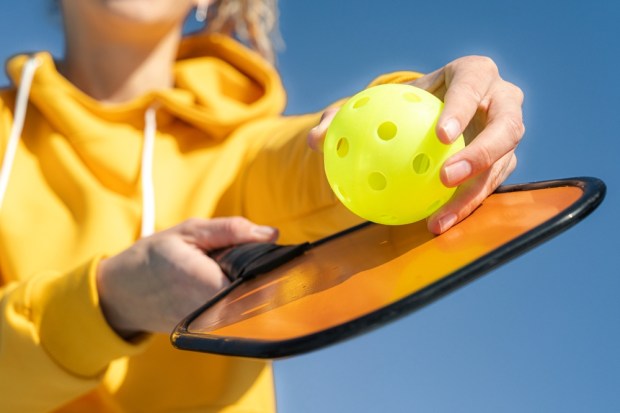Can Pickleball Save Shopping Malls?

Amid the ongoing decline of the shopping mall, a potential savior might come in an unexpected form: pickleball.
Yes, you read that right. The racket sport that is part ping-pong, tennis and badminton, created in 1965 as a backyard game, could be coming to a mall near you.
Picklemall, a startup looking to address the challenges faced by the declining retail real estate industry while meeting the growing popularity of pickleball, is repurposing vacant mall areas into indoor courts.
Set to open its first location in Tempe, Arizona, this July, Picklemall is gearing up to showcase an array of 24 courts, marking their debuts in the United States.
The move comes as pickleball, a sport played on a compact tennis-like court, has been gaining popularity in the United States following the pandemic — largely due to its reputation for being accessible and simple to learn. As a result, the sport has experienced a meteoric rise in popularity, with the estimated number of players soaring from around 5 million in 2021 to 8.9 million in 2022.
Billionaire philanthropist and founder of Picklemall, Steve Kuhn of Austin, Texas, has funded the startup and emphasizes the pressing demand for additional pickleball courts. During an interview with Yahoo Finance Live, the disparity between tennis and pickleball court availability was highlighted. While there is roughly one tennis court for every 30 tennis players, the ratio significantly drops to only one pickleball court for every 250 players.
“As anyone who’s tried to play on a public court and waited for hours to play would tell you, we need more courts, and Picklemall is working to try and bring more courts and bring a great experience to more players,” said Kuhn.
The indoor concept of Picklemall emphasizes inherent advantages, including a controlled climate and championship-style courts. It also allows you to schedule court time and record your game through the Picklemall app.
The Challenges With Indoor Pickleball
While transitioning pickleball indoors presents numerous benefits, it also introduces certain noise challenges. A study by a retired engineer and a professor from Carnegie Mellon University found that a solid hit in pickleball generates around 70 decibels of noise, surpassing the noise levels observed in tennis and approaching those produced by a vacuum cleaner.
Picklemall CEO West Shaw has emphasized the company’s commitment to addressing concerns regarding the noise generated during pickleball matches.
“We’re doing our best to mitigate those complaints by putting sound dampening devices in our facilities, trying to capture some of that noise,” said Shaw. “The great thing is, being indoors, we don’t have to deal with the neighbors hearing the noise. We just have to deal with our tenant.”
Is Pickleball a Temporary Solution or Does It Have Staying Power?
Despite skeptics questioning the enduring nature of pickleball as a sport, Kuhn, a noted driving force behind Major League Pickleball, founded in 2021, remains steadfast in his conviction that pickleball is not merely a passing trend.
To drive its point home, Picklemall plans to open 50 locations nationwide in the next two years, including in cities like San Antonio, Texas and Chicago, Illinois.
Shaw explained that Picklemall leverages Google queries to map the geographic distribution of pickleball players across the United States. However, the widespread growth of the sport itself also serves as a crucial factor in guiding the startup’s decision-making regarding future locations. Consequently, Picklemall heavily relies on its well-defined growth strategy to identify the most suitable areas for establishing new facilities.
“You can see sometimes four generations of a family playing together, and I think that makes [pickleball] completely unique and special,” said Kuhn. “It’s building family memories for people.”
The State of the Shopping Mall
Going back to 2016, PYMNTS was writing about the decline of the shopping mall with a dire statistic: at the time, a new, enclosed shopping mall hadn’t opened in the United States in a decade.
In a 2020 opinion piece for trade publication Chain Store Age, Colin Shaughnessy, executive vice president at commercial real estate firm Unibail-Rodamco-Westfield and U.S. leasing chief at its Westfield malls division wrote at the time: “The millennials and Gen Z-ers whose feet will provide most of the foot traffic in retail centers in the coming decades seek retail, entertainment and dining with a point of difference. A destination with a cool factor is what gets them out of the house.”
Shaughnessy, whose firm owns 28 U.S. malls, wrote that “we make sure our centers are places people want to be by improving both the physical and digital infrastructure, as well as the tenant mix itself — a combination of traditional retail with a focus on dynamic, industry-leading concepts in food, health and wellness, fitness and entertainment.”
Although the concept seemed optimistic and grounded in reality, it ultimately fell short due to premature assumptions about the inclusion of Gen Z and their expectations. At the time, the world had yet to fully grasp the persona of Generation Z, as individuals belonging to this generation were born anywhere between 1997 and 2012.
That said, three years later, the Westfield Mall has been noted as a symbol of San Francisco’s decline and has revealed that it would be handing back the ownership of the San Francisco Centre mall to the bank due to a massive decline in sales, occupancy and foot traffic.
As consumer behaviors have undergone significant transformations, real estate investors, brands and retailers find themselves caught in a challenging predicament. Consumers now seek and anticipate unique experiences, leaving the fate of dying malls uncertain. While pickleball or any other solution remains uncertain, only time and consumer choices will ultimately determine the outcome. However, it remains to be seen if anyone has the patience to wait that long.
